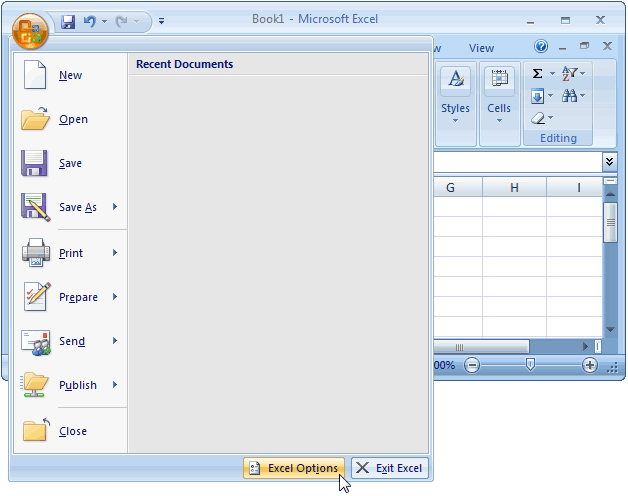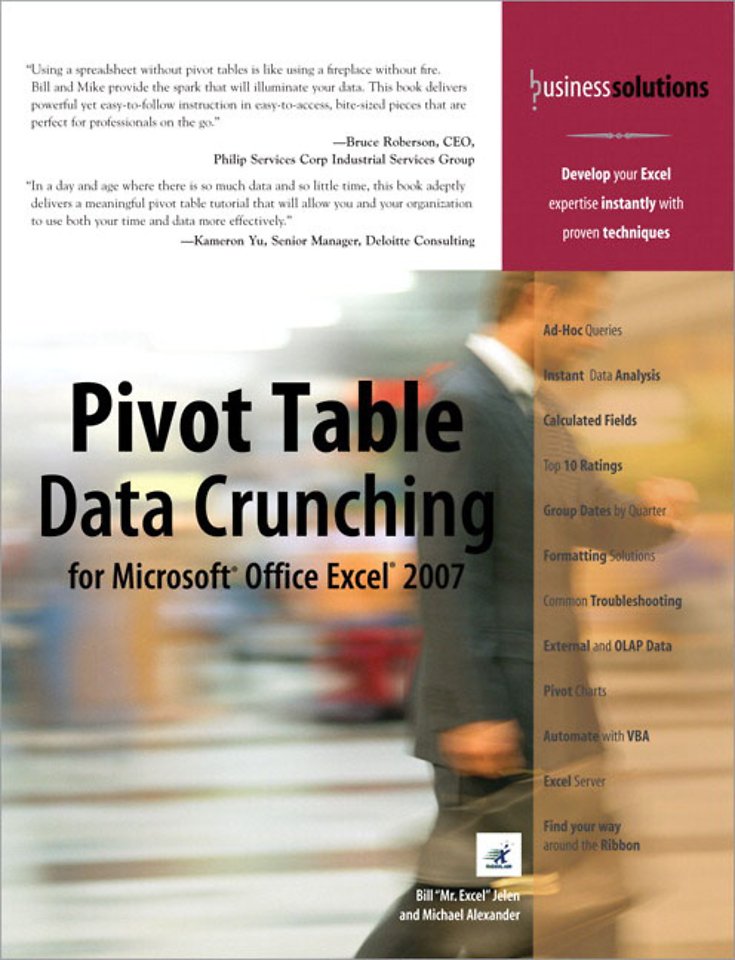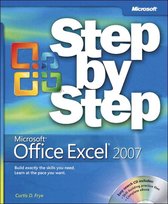Fixes an issue in which Excel 2007 sometimes crashes when you open an Excel workbook previously saved in a newer version of Excel. This occurs if the file uses a new feature that is not available in the 2007 Office system. Fixes issues with the Pre and Post Reform rules in the French Thesaurus. Office 2007 include applications such as Word, Excel, PowerPoint, and Outlook. They’re available as a one-time purchase for use on a single PC. Microsoft 365 plans include premium versions of these applications plus other services that are enabled over the Internet, including online storage with OneDrive and Skype minutes for home use 2. An easy to follow step-by-step tutorial outlining everything you need to know for the corporate environment on Excel. Learn Excel in just a about one hour: C. You now can add data to Excel directly from a photo. Using the Excel app, just take a picture of a printed data table on your Android or iPhone device and automatically convert the picture into a fully editable table in Excel. This new image recognition functionality. Office 2007 also introduced Office Open XML file formats as the default file formats in Excel, PowerPoint, and Word. The new formats are intended to facilitate the sharing of information between programs, improve security, reduce the size of documents, and enable new recovery scenarios.
Office Excel 2007 Download
-->Office 2007 reached its end of support on October 10, 2017. If you haven't already begun to upgrade your Office 2007 environment, we recommend you start now.
This article provides recommendations, information, and links to help administrators and IT Pros in large enterprises plan their upgrades to Microsoft 365 Apps.
Note
- If you're a home user who wants to upgrade from Office 2007 to the latest version of Office, see How do I upgrade Office?
- If you're an admin at a small business or organization who wants to help your users upgrade to the latest version of Office, see Upgrade your Microsoft 365 for business users to the latest Office client.
We also recommend business and enterprise customers use the deployment benefits provided by Microsoft and Microsoft Certified Partners, including Microsoft FastTrack for cloud migrations and Software Assurance Planning Services for on-premises upgrades.
What does end of support mean?
Office 2007, like almost all Microsoft products, had a support lifecycle during which we provided bug fixes and security fixes. This lifecycle lasts for a certain number of years from the date of the product's initial release. For Office 2007, the support lifecycle was 10 years. The end of this lifecycle is known as the product's end of support. Office 2007 reached its end of support on October 10, 2017, and Microsoft no longer provides the following services:
Technical support for issues
Bug fixes for issues that are discovered
Security fixes for vulnerabilities that are discovered


Because of these changes, we strongly recommend that you upgrade as soon as possible.
What are my options?
Because Office 2007 has reached its end of support, you should explore your options and prepare an upgrade plan to either of these latest versions of Office:
Microsoft 365 Apps, the subscription version of Office that comes with many Office 365 (and Microsoft 365) enterprise and business plans.
Office 2019, which is sold as a one-time purchase and available for one computer per license.
A key difference between Microsoft 365 Apps and Office 2019 is that Microsoft 365 Apps is updated on a regular basis, as often as monthly, with new features. Office 2019 only has the same features that it had when it was released in October 2018.
This article provides guidance on upgrading to Microsoft 365 Apps.
What is Office 365? What is Microsoft 365 Apps?
Office 365 (and Microsoft 365) provides subscription plans that include access to Office applications and other cloud services, including Skype for Business, Exchange Online, and OneDrive for Business. Microsoft 365 Apps is the version of Office that comes with many Office 365 (and Microsoft 365) enterprise and business plans. Microsoft 365 Apps includes the full versions of Office apps installed on your client computers. For example, Word, PowerPoint, Excel, Outlook, and OneNote.
Unlike Office 2007, Microsoft 365 Apps uses a user-based licensing model that allows people to install Office on up to 5 PCs or Macs and on their mobile devices. There are also differences in how you deploy, license, and activate Microsoft 365 Apps compared to Office 2007. For more information about Microsoft 365 Apps, see the following information:
Review what's changed since Office 2007
To learn about some of the changes since Office 2007, review the following articles: Changes in Office 2010, Changes in Office 2013, and Changes in Office 2016 for Windows.
For information about the new features available in Microsoft 365 Apps, see What's new in Microsoft 365. For Office 2019, see What's New in Office 2019.
Office Excel 2007 Stdole32.tlb
Review the system requirements for Microsoft 365 Apps
Before upgrading to Microsoft 365 Apps, verify that your client computers meet or exceed the minimum system requirements.
In addition, you should review the system requirements for your Office server workloads. For more information, see Exchange Server Supportability Matrix and System Requirements for Office server products.
Plan for Office 365
Because Microsoft 365 Apps comes with many enterprise Office 365 (and Microsoft 365) plans, you should review your current Office 365 (or Microsoft 365) capabilities as part of planning an upgrade to Microsoft 365 Apps. Prior to deploying Microsoft 365 Apps, for example, you should ensure that all your users have Office 365 (or Microsoft 365) accounts and licenses. For more information, see Deploy Microsoft 365 Enterprise for your organization.
Assess application compatibility
Office Excel 2007 Free Download For Windows
Before deploying Microsoft 365 Apps, you may want to test your business-critical VBA macros, third-party add-ins, and complex documents and spreadsheets to assess their compatibility with Microsoft 365 Apps. For more information, see Assess application compatibility.
To help with assessing application compatibility with Microsoft 365 Apps, you can use the Readiness Toolkit for Office add-ins and VBA. The Readiness Toolkit includes the Readiness Report Creator, which creates an Excel report with VBA macro compatibility and add-in readiness information to help your enterprise assess its readiness to move to Microsoft 365 Apps.
You can download the Readiness Toolkit for free from the Microsoft Download Center. For more information, see Use the Readiness Toolkit to assess application compatibility for Microsoft 365 Apps.
Other resources are also available. For example, if you use Microsoft Endpoint Configuration Manager (current branch), you can use the Microsoft 365 Apps readiness dashboard. Or, you can get assistance from Microsoft through the App Assure program.
Assess your infrastructure and environment
To decide how to upgrade to Microsoft 365 Apps, you should evaluate your infrastructure and environment, including the following areas:
Number and distribution of your clients, including required languages.
IT infrastructure, including operating systems, mobile device support, user permissions and management, and software distribution methods.
Network infrastructure, including connections to the internet and internal software distribution points.
Cloud infrastructure, including existing Office 365 (or Microsoft 365) capabilities, user licensing, and identity.
Your assessment of these components will influence how you want to upgrade. For more information, see Assess your environment and requirements for deploying Microsoft 365 Apps.

Review new Group Policy settings
As with any new version of Office, there are new Administrative Template files (ADMX/ADML) for Group Policy settings. All Group Policy settings for Microsoft 365 Apps are now located in HKEY_LOCAL_MACHINESOFTWAREPoliciesMicrosoftOffice16.0 and HKEY_CURRENT_USERSOFTWAREPoliciesMicrosoftOffice16.0.
You can download the Administrative Template files (ADMX/ADML) for Group Policy settings for Microsoft 365 Apps from the Microsoft Download Center for free. The download includes an Excel file that lists all the Group Policy settings for Microsoft 365 Apps.
Choose how you want to deploy Microsoft 365 Apps
You can deploy Microsoft 365 Apps from the cloud, from a local source on your network, or with Microsoft Endpoint Configuration Manager (or another software distribution solution). Which option you choose depends on your environment and business requirements. Deploying from the cloud, for example, minimizes your administrative overhead, but could require more network bandwidth. Deploying with Configuration Manager or from a local source, on the other hand, offers more granular control over the deployment of Microsoft 365 Apps, including which applications and languages are installed on which client computers.
For more information, see Plan your enterprise deployment of Microsoft 365 Apps.
Choose how often to update Office
With Microsoft 365 Apps, you can control how frequently your users receive feature updates to their Office applications. For more information, see Overview of update channels for Microsoft 365 Apps.
Plan for additional languages
Office Excel 2007 Free
You can install language accessory packs after you've deployed Microsoft 365 Apps in one of its base languages. There are two ways to install language accessory packs:
Have your users download and install the language accessory packs that they need from the Office 365 portal.
Use the Office Deployment Tool to deploy the appropriate language accessory packs to your users.

For more information, see Overview of deploying languages for Microsoft 365 Apps.
Special considerations
The Office Customization Tool is not used as part of the Microsoft 365 Apps installation. Instead, you can customize the installation for your users with the Office Deployment Tool. For more information, see Overview of the Office Deployment Tool.
Removal of InfoPath from Microsoft 365 Apps. InfoPath 2013 remains the current version and therefore isn't included in Microsoft 365 Apps. When you upgrade an existing installation of Office 2007 to Microsoft 365 Apps, InfoPath is removed from the computer. If your users still need to use InfoPath, the 2013 version of InfoPath is available for installation on the Software page in the Office 365 portal.
Office Excel 2007 Word
Related articles
Office Excel 2007 Product Key

Office Excel 2007 Tutorial
For articles about planning, deploying, and managing Microsoft 365 Apps in an enterprise environment, see Deployment guide for Microsoft 365 Apps.
To find out more about upgrading from Office 2007 servers, see Resources to help you upgrade from Office 2007 servers and clients.
For more information about Office 365 (and Microsoft 365) plans, see Microsoft 365 and Office 365 Service Descriptions.
For more information about the support lifecycle for Microsoft products, see Search Product and Services Lifecycle Information.
To discuss or learn more about end of support for Office versions, go to the Microsoft Office End of Support area of the Microsoft Tech Community.
